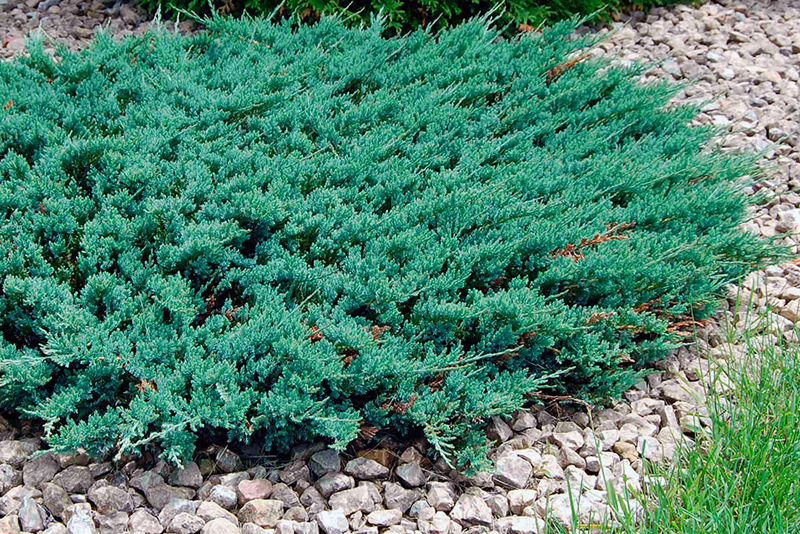Contents
Being one of the cypress family trees the juniper very light-loving plant, but even the small shadow is not a problem for its growth. It doesn’t require any special types of soil being able to grow both on limestones and sands. There are creeping forms and column-shaped among junipers. The gardens with rocks or made in natural style are the best for their planting. You can unmistakably find a juniper shrubs because of the nice smell it has.

The most popular Juniper shrubs for gardening
Common juniper (Juniperus Vulgaris)
Evergreen coniferous shrub, sometimes a small tree of the cypress family. The crown is broadly ovate in the shrubby and narrow-conical forms of the tree-like forms.

Creeping Juniper (Juniperus Horizontalis)
The name was given to the species due to the direction of growth. It does not grow upwards, but “spreads” on the ground, which is often used to decorate the rock garden.

Juniper Cossack (Juniperus Sabina)
This dioecious creeping shrub is about a meter high. Rapidly grows in width and forms dense thickets. Less common are small trees up to 4 m high with curved trunks.

Juniper medium (Juniperus Pfitzeriana)
The diameter of the crown of the adult juniper shrubs reaches three meters, and the height is up to two meters. The shape of the plant resembles a small shrub with horizontally located shoots. Needles are scaly and acicular, greenish-yellow in summer and yellow-brown in winter.

Soil for planting Juniper shrubs
The PH of the garden soil depends on the plant species. Alkaline one is necessary for the Common, Central Asian, and Cossack junipers. Dolomite flour or hydrated lime added into the soil is the best way to obtain the necessary reaction. Other species prefer an acid reaction. This is achieved by inserting peat and sand into the soil, as well as by mulching with the use of wood shavings and peat.

Siberian species requires sandy and sandy loamy soil. Virginian juniper needs clay soil, with compost added. You need to add drainage from the broken bricks, large pebbles, and sand in the planting pit. The thickness of the drainage layer is about 15-25 cm.

The plant is able to withstand without watering for a long period. However, in a hot dry summer, it is recommended to water it at least once a month.



